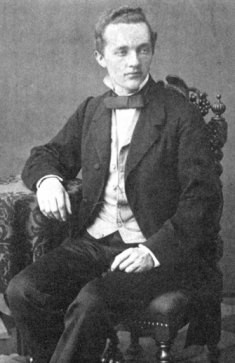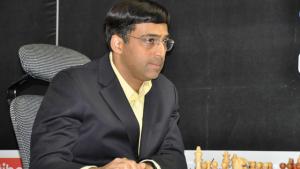
The Paulsen Sicilian: A History, Part 2
Last week, we looked at the history of the Paulsen Sicilian until the late 1950s.
Around this time, it was accepted that the c2-c4 plan was not terribly dangerous for Black, whose dark-squared bishop was still unimpeded by the pawn. The line 5...Nf6 6.Nc3 Bb4 began to be seen as entirely adequate for Black, and 5.c4 was sometimes even described as an error.
Consequently, White began to prefer setups with the knight on c3. In the early days, White usually preferred to put the bishop on e2. This allowed Black to reach a Scheveningen (while avoiding the Keres Attack with g2-g4!), as well as giving him several other options, such as an early ...b7-b5, ...Bb4, or transposition to the Taimanov Variation by ...Nc6.
Naturally, the Paulsen gained considerable popularity.

One of the earliest practitioners was the Soviet player Ilya Kan -- and consequently, the opening is sometimes named after him.

By the early 1960s, players of the white pieces had begun to prefer a more aggressive development of the bishop -- on d3.
This was logical -- while Black's ...a6 move kept many options open in the event of White's classical development of the bishop on e2, it also did not put as much immediate pressure on the center, so White could afford to put the bishop on d3 instead.
The standard answers to Bd3 in the open Sicilian failed: ...e5 would lose a tempo, and ...Nc6 would make the ...a6 move irrelevant in the structure resulting from Nxc6.
Illustrating this change in structure is the game Stein-Portisch, which can be found in many anthologies:
Eventually, White's two main approaches to the Paulsen became clarified -- the immediate 5.Bd3, keeping open the option of c2-c4 later; and 5.Nc3 with a later Bd3, which forces Black to declare himself a little more.
Waiting in the wings were the less common approaches with g3 and Bg2 and 5.c4.
In the 70s and 80s, there was a great tendency towards Hedgehog and other provocative and "reactive" setups with Black. Thus the Paulsen achieved great popularity. A major exponent was the Swedish grandmaster Ulf Andersson. During these times, a great number of unusual and tricky ideas were being developed in the Paulsen.

One of these was the idea to fianchetto the dark-squared bishop. Combined with ...a6 and ...e6, this might have seemed very dangerous to earlier players, but as time has gone on, the number of things a player can get away with in chess has increased.
It is a lot easier to play a provocative and "twisted" setup when it has already been tested by some strong players! Andersson, with his subtle feeling of danger, was among the first with some of these tricky ideas:
Towards the end of the second millennium, Black's reserve of ideas increased, as a result of many experiments by grandmasters. Thus, against 5.Bd3 the main line had become 5...Nf6 6.0-0 Qc7 7.Qe2 d6 8.c4 g6 -- White had more space, but Black's setup was very difficult to pierce and could react quickly to any excesses by the first player.
Black also had the idea of 5...Bc5 6.Nb3 Be7!? (in place of the earlier 6...Ba7, which dominated the theory in Polugaevsky's day). The knight was pushed back to b3, and then Black arranged a Hedgehog setup. 7.Qg4 could be met by 7...g6, and once the Hedgehog was arranged, Black often played ...h5-h3-h3.
The Paulsen became very popular among professional GMs in the open tournament circuit. And no wonder why -- among its qualities are a lack of "drawing" variations, where White can kill the play early on.
In fact, there are a lack of concrete variations in general -- which favors the stronger or more experienced player. There are a great deal of strange positional themes that weaker players might have trouble understanding. And finally the opening is extremely sharp, with a low draw rate.
Against the alternative, 5.Nc3 another, radical, idea was developed -- to delay Black's development for yet another move, making the advance 5...b5.
This was connected with the plan of meeting 6.Bd3 with 6...Qb6, trying to force the knight back. In the late 1990s and early 2000s, grandmasters Ilya Smirin and Alexander Goldin were two of the major exponents of this.
Another new idea was the paradoxical idea of playing ...Bd6, blocking the black d-pawn, in order to control the central dark squares.
And against the move order 5.Nc3 Qc7 6.Bd3 Nf6 7.f4, Black did not have to be content with a Scheveningen-type setup with 7...d6 (where White might possibly castle queenside, with very aggressive play), but could play such moves as 7...b5 or 7...Bb4.
The Modern Day:
Currently the Paulsen retains its position as one of the top openings for grandmasters to use against weaker players in open tournaments. On the top level, its major exponents are Peter Svidler (who uses it almost constantly) and Gata Kamsky, while Fabiano Caruana also uses it frequently.

Black's ideas have been enriched further with some recent developments. Two new ideas in meeting 5.Bd3 have been used:
5...Ne7!?
This strange and flexible move has been used by Kamsky and Magnus Carlsen, and is a specialty of GM Vadim Milov. Black plans to support ...Nbc6, while the knight might also end up on g6.
In fact, 5...Ne7 was used as early as the 1960s, but has been seen much more frequently in recent years.
Another paradoxical idea is to meet 5.Bd3 with 5...Nf6 6.0-0 e5!?
It might seem strange to play ...e5 in two moves, and indeed when you compare with a Najdorf, Black has lost a tempo.
But against this consideration, Black can point out the Bd3 as not being well-placed in this structure, and also the dark-squared bishop is not shut in by ...d6 as in the Najdorf.
This was first played by Josif Dorfman in 1989, and taken up by the creative Oleg Romanishin a decade later. Nowadays it is seen quite frequently and is considered very solid -- as is usually the case with Sicilians where Black plays ...e5:
A further development involves White's return to the 5.c4 move. In particular, Black has experienced some problems after 5...Nf6 6.Nc3 Bb4 7.Qd3!?
White has managed to keep his space advantage without allowing too much counterplay:
Thus, in the Paulsen, we see an ancient opening created by players who were surprisingly ahead of their time.
Since those 19th century battles by candlelight, the opening evolved into a tricky, provocative variation -- the professional's weapon in today's age of widespread information availability.
RELATED STUDY MATERIAL
- Read GM Smith's last article, The Paulsen Sicilian: A History (part 1).
- Watch GM Roman Dzindzichashvili's video lesson on the Paulsen Sicilian.
- Take a lesson on the Paulsen Sicilian in the Chess Mentor.
- Solve some puzzles in the Tactics Trainer.
- Looking for articles with deeper analysis? Try our magazine: The Master's Bulletin.






